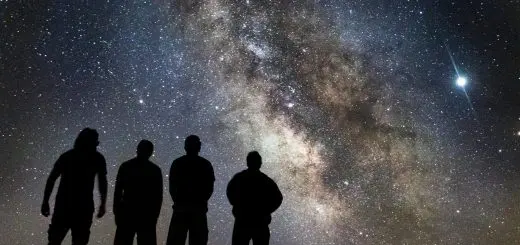The Flower Dance: Hopi Ritual Celebrating Growth

Looking for more amazing products? Check out our online store and explore our collection here! Happy shopping!
Before diving in, please note: This post is for informational purposes only. If you’d like to know more about how we approach topics, feel free to check out our friendly Disclaimer Page.
Hey there, amazing readers! 
We’re committed to delivering quality posts, and your support (even just sticking around despite the ads) means everything to us. So, bear with us, and thanks for helping us keep the good vibes rolling. Now, on to the fun stuff!
TRANSLATE BUTTON AT THE END OF THE ARTICLE
Overview
The Flower Dance, also known as the Powamu Ceremony, is a significant ritual celebrated by the Hopi Tribe of Native Americans.
This vibrant and colorful ceremony is held annually to honor the arrival of spring and celebrate growth.
The Flower Dance holds deep cultural and spiritual significance for the Hopi people, who have been performing this ritual for centuries.
This article will delve into the rich traditions and practices of the Hopi Tribe, exploring the origins and history of the Flower Dance, the symbolism and meaning behind the ritual, the traditional costumes and regalia worn during the dance, the music and dance movements, the role of community in the celebration, the offerings and prayers made, modern adaptations and evolutions, and efforts to preserve this cherished tradition for future generations.
Introduction to the Hopi Tribe and their Traditions
The Hopi Tribe, known as "the peaceful ones," is a Native American tribe residing primarily in northeastern Arizona.
Their ancestral lands feature a stunning desert landscape characterized by mesas, canyons, and plateaus.
The Hopi people have a deep connection to the land and have maintained their unique cultural traditions over centuries.
Their society is organized into clans, and kinship ties play a vital role in Hopi culture.
The tribe is known for their rich artistic traditions, particularly in pottery and katsina dolls, as well as their spiritual ceremonies and rituals.
Significance of Flowers in Hopi Culture
In Hopi culture, flowers hold profound symbolism and are considered sacred.
Flowers represent the essence of life and growth, embodying the life force that sustains all living beings.
They are seen as gifts from the Creator and are believed to possess healing and transformative powers.
The Hopi people have a deep understanding of the cycles of nature, and flowers are revered as a manifestation of the renewal and abundance that comes with the arrival of spring.
The Flower Dance is a way for the Hopi Tribe to express gratitude for the blessings of the natural world and to ensure the continued fertility of their land.
Origins and History of the Flower Dance Ritual
The origins of the Flower Dance can be traced back to the ancient Ancestral Puebloans who inhabited the Southwest region of the United States.
The Hopi Tribe, descendants of these ancient civilizations, have carried on the tradition of the Flower Dance for generations.
The precise details of the dance’s origins have been passed down through oral tradition, with variations in stories depending on each clan’s perspective.
However, it is widely believed that the Flower Dance has been an integral part of Hopi culture for over a thousand years.
The ritual has evolved over time, adapting to changing circumstances while retaining its core symbolism and spiritual significance.
Preparation and Planning for the Flower Dance
The preparation and planning for the Flower Dance begin months in advance.
The responsibility for organizing the ceremony falls on the shoulders of the village leaders and religious leaders, known as kikmongwi and katsina chiefs, respectively.
The village leaders consult the tribal calendar and select an auspicious date for the dance.
They also oversee the planting and cultivation of the necessary flowers and crops, ensuring that the dance takes place in the midst of a blooming environment.
The entire community comes together to assist in the preparations, with various tasks assigned to different individuals, such as constructing ceremonial structures, creating costumes, and gathering the necessary materials for the ritual.
Symbolism and Meaning Behind the Flower Dance Ritual
The Flower Dance is a deeply symbolic ritual that encompasses various aspects of Hopi cosmology and spirituality.
It is a celebration of growth, fertility, and the interconnectedness of all living beings.
The dance is believed to bring harmony to the community and the wider world, serving as a prayer for abundant crops and blessings for the upcoming year.
The circular movements of the dancers represent the cycles of nature, while the flowers and other natural elements used in the ritual symbolize the renewal and regrowth of the earth after the harsh winter months.
The Flower Dance is also seen as a form of spiritual purification, cleansing the participants and the community of any negative influences.
Traditional Costumes and Regalia Worn During the Dance
During the Flower Dance, participants wear elaborate traditional costumes and regalia that hold deep symbolic meaning.
The clothing is adorned with vibrant colors, feathers, shells, and other natural materials.
Men typically wear katsina masks, representing the spiritual beings who act as intermediaries between the Hopi people and the divine.
Women wear brightly colored dresses and shawls, often decorated with intricate embroidery and beadwork.
The costumes worn during the Flower Dance are meticulously crafted by skilled artisans within the community and are considered sacred objects.
Each piece of regalia tells a story and carries the history and traditions of the Hopi people.
Music and Dance Movements in the Flower Dance
Music and dance are integral components of the Flower Dance, creating a rhythmic and vibrant atmosphere during the ceremony.
The music is performed by a group of men using traditional instruments such as rattles, drums, and flutes.
The dance movements are characterized by graceful and deliberate steps, with dancers moving in a circular formation.
Each step and gesture has specific meanings, conveying prayers and blessings to the natural world.
The dance is accompanied by chants and songs, sung in the Hopi language, which further enhance the spiritual and ceremonial aspects of the ritual.
The Role of Community in the Flower Dance Celebration
The Flower Dance is a communal celebration that brings the entire Hopi community together.
The preparation and execution of the ritual involve the active participation of both men and women, young and old.
The community members contribute their time, skills, and resources to ensure the success of the ceremony.
The Flower Dance serves as a unifying force, strengthening the bonds between individuals and clans within the tribe.
It is an opportunity for the Hopi people to reconnect with their cultural heritage, pass down traditional knowledge to younger generations, and reinforce their collective identity.
Offerings and Prayers Made During the Ritual
Central to the Flower Dance are the offerings and prayers made by the participants.
The Hopi people have a deep reverence for the land and the natural world, and the ceremony serves as a way to express gratitude and seek blessings.
Offerings of cornmeal, seeds, and other agricultural products are made to the earth as a sign of appreciation for its fertility.
Participants also offer prayers for rain and a bountiful harvest, as well as for the well-being of the community and the world at large.
The Flower Dance is seen as a sacred dialogue between the Hopi people and the divine, a way to establish harmony and balance in the universe.
Modern Adaptations and Evolutions of the Flower Dance
As with any cultural tradition, the Flower Dance has undergone some modern adaptations and evolutions.
The Hopi people have faced challenges in preserving their cultural heritage in the face of outside influences and changing lifestyles.
However, efforts have been made to ensure the continuity of the ritual.
Some adaptations include incorporating contemporary materials into the costumes and regalia, using recorded music in addition to live performances, and introducing educational programs to teach the younger generation about the significance of the Flower Dance and other Hopi traditions.
These adaptations aim to strike a balance between preserving the integrity of the ritual and making it accessible to a broader audience.
Preserving the Flower Dance Tradition for Future Generations
Preserving the Flower Dance tradition is of paramount importance to the Hopi Tribe.
Recognizing the need to pass down the cultural knowledge and practices to future generations, the community has taken various measures to ensure the continuity of the ritual.
Efforts include documentation of the dance through photography and videography, oral histories passed down from elders to younger members, and the establishment of cultural centers and museums dedicated to preserving and promoting Hopi traditions.
Additionally, the tribe is actively involved in educational outreach programs, both within the community and externally, to raise awareness about the Flower Dance and other cultural practices.
These collective endeavors are crucial in safeguarding the Flower Dance tradition for the prosperity and cultural identity of the Hopi people.
Conclusion
The Flower Dance holds a special place in the traditions and culture of the Hopi Tribe, serving as a vibrant celebration of growth and renewal.
Through dance, music, and offerings, the Hopi people express gratitude to the natural world and seek blessings for the coming year.
The Flower Dance is a testament to the deep spiritual connection between the Hopi people and the land, as well as their commitment to preserving their cultural heritage.
As the Hopi Tribe continues to navigate the challenges of the modern world, efforts to pass down the Flower Dance tradition to future generations are crucial in ensuring the endurance of this cherished ritual for years to come.

The Enlightenment Journey is a remarkable collection of writings authored by a distinguished group of experts in the fields of spirituality, new age, and esoteric knowledge.
This anthology features a diverse assembly of well-experienced authors who bring their profound insights and credible perspectives to the forefront.
Each contributor possesses a wealth of knowledge and wisdom, making them authorities in their respective domains.
Together, they offer readers a transformative journey into the realms of spiritual growth, self-discovery, and esoteric enlightenment.
The Enlightenment Journey is a testament to the collective expertise of these luminaries, providing readers with a rich tapestry of ideas and information to illuminate their spiritual path.
Our Diverse Expertise
While our primary focus is on spirituality and esotericism, we are equally passionate about exploring a wide range of other topics and niches 

To ensure we provide the most accurate and valuable insights, we collaborate with trusted experts in their respective domains 
Our blog originally focused on spirituality and metaphysics, but we’ve since expanded to cover a wide range of niches. Don’t worry—we continue to publish a lot of articles on spirituality! Frequently visit our blog to explore our diverse content and stay tuned for more insightful reads.
Hey there, amazing reader! 
Check out our store here and take a peek at some of our featured products below! Thanks for being awesome!













